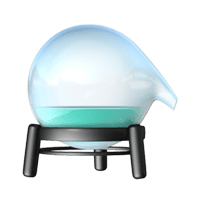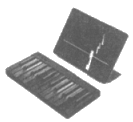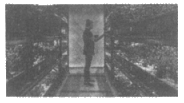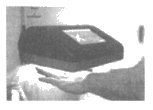本试卷共五道大题,39道小题。满分60分。考试时间90分钟。
知识运用(共14分)
一、单项填空(共6分,每小题0.5分)
从下面各题所给的A、B、C、D四个选项中,选择可以填入空白处的最佳选项。
1. Betty is so happy about having a baby brother. She wants to share every toy with ___________.
A. him B. her C. me D. you
2. —Mom, which sweater looks better on me?
—Sweetheart, I think you look nicer ___________ red.
A. on B. for C. at D. in
3. —___________ was your trip to China, Peter?
—It couldn’t have been more wonderful!
A. What B. Why C. How D. When
4. —___________ you please turn down the radio? I’m on the phone with my friend.
—Sorry, I’ll turn it down now.
A. Could B. Need C. Must D. Should
5. She never stops trying, ___________ she is making great progress.
A. or B. but C. and D. if
6. Ben has been in Beijing for years, and he can speak Chinese as ___________ as the locals.
A. good B. well C. better D. best
7. If there ___________ anything I can do to help, please let me know.
A. is B. will be C. was D. has been
8. David ___________ so hard. He is always the first to come and the last to leave.
A. will work B. works C. worked D. was working
9. —I went to your home yesterday afternoon, but nobody was in.
—Sorry, we ___________ basketball in the gym at that time.
A. play B. will play C. were playing D. have played
10. I ___________ that movie several times, and I still want to see it again.
A. see B. saw C. am seeing D. have seen
11. Spring Festival ___________ in many countries now.
A. celebrates B. is celebrated C. will celebrate D. will be celebrated
12. —Your jacket looks so cool! Can you tell me ___________?
—Sure. I will send you the shop’s address later.
A. where will you buy it B. where you will buy it
C. where did you buy it D. where you bought it
二、完形填空(共8分,每小题1分)
阅读下面的短文,掌握其大意,然后从短文后各题所给的A、B、C、D四个选项中,选择最佳选项。
A Michigan high school football team came together to surprise their beloved water boy, Robby Heil, who has Down syndrome (唐氏症). He’s a senior school student and has worked as an assistant supplying drinking water for the school’s football team for four years. The team decided to do something special for Robby, so they designed a __13____ just for him.
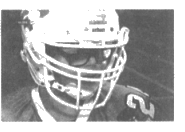
Last Friday, the team put Robby in the game and gave him the ball. As the crowd repeated his name loudly, Robby ran down the field and scored a touchdown. Robby’s father __14____ the moment on his video camera, while his mother fell to her knees with joy as she watched from the sidelines.
The family was really happy and also surprised by all of the __15____ they have received. When the head coach, Burnside, who planned the whole event, telephoned the coach of the other team, everyone was __16____ all for it. When Robby was scoring, everyone was shouting out his name. All the players cheered him, including the opposing team—they even gave Robby a sports shirt that they all had __17__. “I think the sportsmanship is the great part,” said Burnside. “The sportsmanship from both sides was just __18__. Their coaches were in tears, our coaches were in tears. When they watched the game, their __19____ also had signs with Robby’s numbers up.”
“Robby is just a great kid. He __20____ a lot to the kids,” Burnside added. “I am hoping that everybody can learn from him. I’ve learned more from him than he has from me in the past four years.”
13. A. course B. game C. school D. team
14. A. enjoyed B. imagined C. recorded D. chose
15. A. support B. advice C. expectations D. complaints
16. A. probably B. secretly C. nervously D. immediately
17. A. needed B. worn C. washed D. signed
18. A. popular B. limited C. amazing D. different
19. A. stands B. computers C. rooms D. books
20. A. reads B. means C. sends D. speaks
阅读理解(共36分)
三、阅读下列短文,根据短文内容,从短文后各题所给的A、B、C、D四个选项中,选择最佳选项。(共26分,每小题2分)
A
Every year, many inventions are introduced to the world. Some help us solve problems. Others make life easier, or more fun. Here are four of last year’s best inventions.
| LUMI was designed for music lovers. “We hope that LUMI can help people who have just started learning how to play music,” says the inventor Will MacNamara. The small Lumi keyboard lights up, allowing users to know which keys to press. And with the LUMI app, users can learn their favorite songs. |
| Millions of people around the world have to face the problem of unsafe food. Marc Oshima says his indoor farming technology can help. Instead of growing in dirt, crops grow in reusable cloth. The plants are watered with mist. This requires 95% less water than field farming. |
| For people who are blind, the ORCAM MYEYE 2 could be a game changer. It might also prove useful for people with reading difficulties. Described as “talking glasses”, it can read text aloud. Amnon Shashua invented the technology. |
| Christine Schindler is an engineer. She wanted to help stop the spread of foodborne illnesses, so she created PATHSPOT. It uses light to scan (扫描) a person’s hands for harmful germs. Restaurant workers hold their hands under the scanner. Then the scanner decides whether they should be rewashed. |
21. LUMI was designed for ___________.
A. indoor farmers B. music lovers
C. blind people D. restaurant workers
22. Who is the inventor of the ORCAM MYEYE 2?
A. Will MacNamara. B. Marc Oshima.
C. Amnon Shashua. D. Christine Schindler.
23. Where can we probably read this passage?
A. A medical website. B. A travel guide.
C. A school notice. D. A science magazine.
B
This Family Keeps Their Community Warm by Cutting Firewood for Those in Need
Washingtonis home to lots of trees—it is the Evergreen State, after all—and it has lots of fireplaces and wood-burning heaters too. But what if you lived there and couldn’t cut wood or couldn’t afford to pay someone to do it? Luckily, Shane McDaniel and his twin sons, Harrison and Henry McDaniel, are happy to help. The three men cut truckloads of wood—then give it to those in need.
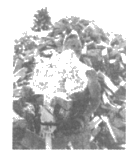
The idea actually started as a father-son relationship project, Shane told msn.com. “I cut wood with my dad. He just loved doing it,” said Shane. He wanted to pass along that feeling, so he and the twins spent the summer cutting. The result was a great wall of wood piled up (堆积) around their house. To buy that much it would cost about $10,000.
It was too much for the McDaniels to use themselves, and when the weather turned cold that November, Shane started thinking of others. He posted online: “IF YOU ARE IN NEED OF FIREWOOD AND CANNOT AFFORD IT, PLEASE PM [personal message] ME! … If you know someone who BURNS WOOD, please help me and my boys make sure NO ONE GOES COLD IN OUR NEIGHBORHOOD.”
The response (反应) was immediate. One man offered to donate (捐赠) a wood-burning stove. Others raced over to Shane’s house with more wood. One woman, noticing the photo of the McDaniels, started to feel warm in other ways: “I don’t need the wood. But I am truly happy for what you have done!”
Single mom Katelyn Ticer, 29, and her four-year-old daughter depended on a wood-burning stove as their only way of heat, so it was so good to receive a truckload of firewood from the McDaniels. “To get that much wood brought me to tears,” she told msn.com. “So much stress and worry is off my shoulders. I couldn’t be more thankful.”
Shane is ready to help more people. “Giving is the reward,” he said. “It has nothing to do with how well it’s received; it’s about how much it’s needed.”
24. What did Shane and his sons do to help their neighbors?
A. They gave firewood to those in need.
B. They bought wood-burning stoves.
C. They raised about 10,000 dollars.
D. They paid someone to cut wood.
25. What happened after Shane posted messages online?
A. His family received lots of presents.
B. Some people quickly offered to help.
C. Lots of wood piled up around their house.
D. The weather suddenly turned freezing cold.
26. What did Shane think of what he had done to help others?
A. Being needed drives us to give.
B. Love is not giving but receiving.
C. Helping others is just helping ourselves.
D. It’s better to help people fish than to give them fish.
C
It Is Never Too Early to Think—and Communicate—like a Scientist
Who is a scientist and what is his job? A chemist doing experiments? A geologist out studying rocks? When most people think about science, they imagine characters making discoveries or finding cures (治疗方法) for new diseases. However, these leave out an extremely important part of the scientific process: communicating—sharing the results of that work.
Imagine if someone discovered something important about a disease. Other scientists need to understand the work well enough to use these new developments to make even more discoveries in the future. The public, too, needs to understand how these discoveries might influence their lives. But none of this will be possible if the work is not shared. Being a scientist goes far beyond the moment of discovery.
Without clear communication, scientists would not be able to use the work that has already been done. So how do scientists tell others about the work that they have done? How do they make sure that everything that they share is as clear and correct as possible?
Researchers publish their work in scientific journals (期刊). These journals can be read by other researchers around the world. It is very important for these journals, and for the scientists who read them, to make sure that the research included is as correct as possible. In order to do that, articles given to scientific journals before publication first go through a process called peer review. Other scientists who do research in areas related to the work in an article are asked to read through it. Scientists also provide feedback to the writers. They bring up new questions the writer may not have considered, recognize limitations to the results being described, and also make sure that no mistakes were made during the process.
Frontiers for YoungMinds is a scientific journal, written for—and reviewed by—young people. All of the articles in it are based on works already published in a peer reviewed scientific journal. However, while scientists are good at making sure that articles are understandable for other scientists, there are no better experts to make sure that something can be understood by young people than the young people themselves. By working together with an expert, young reviewers read the article to see if any part of the article is hard to understand, make it clear why the experiment was done in the way it was done, and check whether the figures (数据) clearly explain the point of the article.
Basically, these young reviewers learn to think like scientists. It is never too early to start! Ask questions, learn new things, and don’t forget the importance of communicating your findings.
27. What is Paragraph 2 mainly about?
A. What is required to be a good scientist.
B. Who should understand a scientist’s job.
C. Why sharing the results of scientific work is important.
D. How scientists make sure their work is clear and correct.
28. From the passage we can know that ___________.
A. scientists are good at working together with others
B. young people usually enjoy reading scientific journals
C. in peer review, other scientists bring up questions to readers
D. young reviewers help make articles in Frontiers for Young Minds more readable
29. What is the writer’s main purpose in writing this passage?
A. To introduce how scientists do their jobs.
B. To offer practical advice on how to ask scientific questions.
C. To explain the effects of peer review on scientific journals.
D. To encourage young people to think and communicate like scientists.
D
Why Wisdom (智慧) Doesn’t Work as Well as We Think It Does
We relate wisdom to age. Most of us believe that gaining wisdom is like picking up stones on a path: the longer you’re on the path, the more stones you’ll collect.
It seems a reasonable inference, then, the older you are, the more wisdom you have. Older people usually make fewer careless mistakes, and they often know the best course of action in a given situation. But I think there’s another explanation at play here, which we might consider in the light of what we know about human decision-making.
There are two different ways of decision-making: plans and habits. Here’s an example of how these ways differ. If you’re driving somewhere for the first time, you’ll need a plan. You will need to know whether to turn left or right, because you don’t already have that information stored away in your head. On the other hand, you don’t need a plan when you’re going somewhere familiar (熟悉的) because the order of steps that will take you there is stored as a habit. But if you find that the road is blocked by fallen trees, you’ll have to think about another way. Such a plan allows you to more easily deal with new situations, but they require a lot more attention.
The use of plans and habits changes over the course of our lives. A baby can’t use habits to make decisions, because any situation she’s in will be a new one. As we build up a store of familiar situations, the more we can depend on habits. The older you are, the more likely your behavior is based on tried-and-true habits rather than fresh planning.
But what does this tell us about wisdom? Well, it suggests that wisdom is interactive, not static: it is a relationship between a person and their surroundings (环境). The reason that wisdom seems to come out so effortlessly from well-seasoned minds is that they have a store of habitual information about how to act in a given situation.
But it also makes a worrying prediction: if older people were put in a new situation, with which they had no familiarity, they wouldn’t make better decisions than someone who is young. It is the same with mistakes. Older, seemingly wiser people make fewer mistakes because they’re familiar with surroundings they often deal with. If you controlled for the familiarity of the situation, then people in different age groups would probably make the same number of mistakes. Younger people might even make fewer mistakes, because they are better at coming up with fresh plans.
While wisdom gives you expertise within a particular environment, it doesn’t mean that you’ll be able to generalize that to new experiences. It’s not that we necessarily get wiser as we get older, but we put ourselves in fewer situations where we are likely to make mistakes.
30. What do we know about the two ways of decision-making according to the passage?
A. Using plans or habits to make decisions is an ever-changing process.
B. The use of plans and habits requires lots of attention and effort.
C. When going somewhere familiar, we need to work out a plan.
D. Younger people depend more on habits to make decisions.
31. What can we learn from the passage?
A. Younger people have a great advantage in becoming wiser.
B. Older people are better at making careful plans before action.
C. Older people seem wiser because they’ve stored more habitual information.
D. Younger people make more mistakes when they’re in unfamiliar surroundings.
32. What does the underlined word “static” probably mean in Paragraph 5?
A. Uncontrolled. B. Unchanged.
C. Increasing. D. Surprising.
33. What is the writer’s main purpose in writing this passage?
A. To stress the importance of gaining wisdom.
B. To compare the two different ways of decision-making.
C. To call on younger people to learn more from older people.
D. To remind us to view the wisdom of older people reasonably.
四、阅读短文,根据短文内容回答问题。(共10分,每小题2分)
What is art? This question has confused great thinkers for centuries. In fact, there is disagreement about exactly what art is. Most of us would agree that Leonardo da Vinci’s Mona Lisa is art, but what about a video game? One dictionary states that art is “making objects, images or music, etc. that are beautiful or that express certain feelings.” This, however, could be regarded as too general a definition(定义).
Art is usually divided into two areas: fine art, such as painting, music and sculpture (雕塑) and applied art (实用美术), such as fashion design, furniture making and gardening. According to Aristotle, fine art is something which has a conceptual function (概念功能). He noted that artists produced objects, drama and music which showed their emotions and ideas, rather than just trying to offer a true image of nature. Andy Warhol, the American artist famous for his Pop Art in the 1960s, once said, “An artist produces things that people don’t need to have.” This is the biggest difference between fine and applied art. Applied art requires an object to be functional as well as beautiful.
In the twentieth century, however, artists began to challenge the accepted idea of art. The French artist Marcel Duchamp changed people’s understanding of what sculpture was by mounting a bicycle wheel upside down on a stool in 1913 and calling it art. In 2002, Japanese artist Yayoi Kusama created an art work that required the public’s involvement. In this work, visitors were asked to cover a white room that had white furniture and objects in it, with many colorful sticker dots (圆形贴纸). He once said, “Everything an artist produces is art”.
Today, we can see examples of art all around us which are not expensive. Many towns and cities have public art which can be enjoyed by all. Some museums, like the National Art Museum of China in Beijing, have no entrance fee. Others are free for children and students. Street art is also popular in different neighborhoods around the world.
Art can make our ordinary, everyday lives a little more special. This idea may not work for all art, but perhaps we can agree that it is a goal towards which all artists should work.
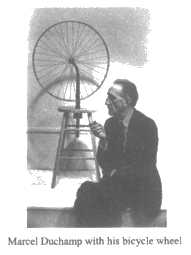
34. What question has confused great thinkers for centuries?
35. What is Paragraph 2 mainly about?
36. What does applied art require according to this passage?
37. When did artists begin to challenge the accepted idea of art?
38. What’s the writer’s opinion on art?
书面表达(共10分)
五、文段表达(10分)
39. 从下面两个题目中任选一题,根据中文和英文提示,完成一篇不少于50词的文段写作。文中已给出内容不计入总词数。所给提示词语仅供选用。请不要写出你的校名和姓名。
题目①
假如你是李华,你的传统文化课老师布置了本月在线学习课程任务,你们班交换生Peter给你发邮件询问相关事情。请用英语回复一封邮件,告诉他课程的主要内容,学习要求并分享你将如何学习课程的一些想法。
提示词语: Chinese traditional culture, custom, festival, tea art, papercut art, website, plan
提示问题: ● What is the online course about?
● What do you need to do to complete the course?
● What would you like to share with Peter about preparing for the course?
Dear Peter, I’m glad to receive your email. _____________________________________________________ ______________________________________________________________________________ _______________________________________________________________________________ If there is anything more that I can help with, please let me know. Yours, Li Hua |
题目②
自主学习是一种学习模式,是学习者自我管理的一种能力,也是青少年面向世界,适应未来的需要。
某英文网站正在开展以”自主学习(self-directed learning)”为主题的征文活动。假如你是李华,请用英语写一篇短文投稿,谈谈在过去的两个月期间你是如何自主学习的,以及这样做给你带来的好处。
提示词语: leaming resources, goal, manage time, tools, apps, plan, improve
提示问题: ·What did you do for your self-directed learning?
·What benefits have you got from doing so?
【试题答案】
知识运用
一、单项填空
1. A 2. D 3. C 4. A
5. C 6. B 7. A 8. B
9. C 10. D 11. B 12. D
二、完形填空
13. B 14. C 15. A 16. D
17. D 18. C 19. A 20. B
阅读理解
三、阅读短文,选择最佳选项。
21. B 22. C 23. D 24. A 25. B
26. A 27. C 28. D 29. D 30. A
31. C 32. B 33. D
四、阅读短文,回答问题。
34. What is art?
35. The two areas of art.
36. Applied art requires an object to be functional as well as beautiful.
37. In the twentieth century.
38. Art makes our ordinary, everyday lives a little more special.
书面表达
五、文段表达
39. 参考范文:
题目①
Dear Peter,
I’m glad to receive your email. The online course is about papercutting. I think it’s a fabulous art form. We can create anything, from simple graphic design, to detailed three-dimensional images.
First, we need to log in to our school website and choose the course “papercut art”. Then, we should watch a video about the history of Chinese handicrafts. After watching it, we can read posts and take part in online discussions. To complete the course, we are also required to hand in a poster and stick our papercuts onto it.
You’d better buy a craft knife and some thick paper before taking the course. And you can also start collecting some interesting papercut designs.
If there is anything more that I can help with, please let me know.
Yours,
Li Hua
题目②
During the past two months, I had a good experience after deciding to begin self-directed learning. First, I made full use of online courses. In the morning, I attended the live broadcast classes via a “cloud platform” on our school website. To keep myself focused and engaged, I raised questions and took part in discussions. Moreover, I made my own learning goals. For each subject I had a weekly plan about things to do and then I broke big projects down into small tasks. After crossing them off of my to-do list, I felt so great.
Self-directed learning requires time management and willpower. I learned to explore online resources, set goals, stick to plans, and monitor progress all by myself.
